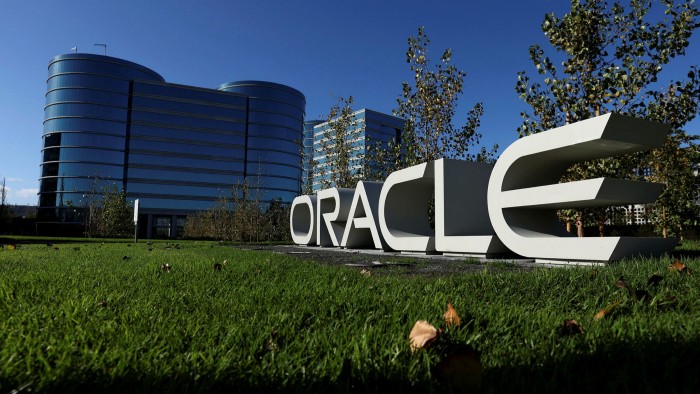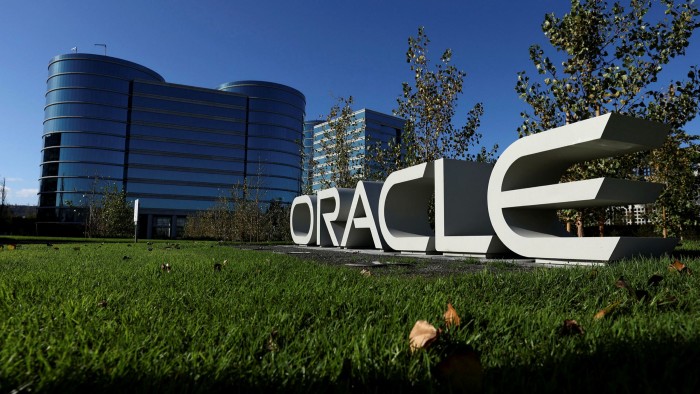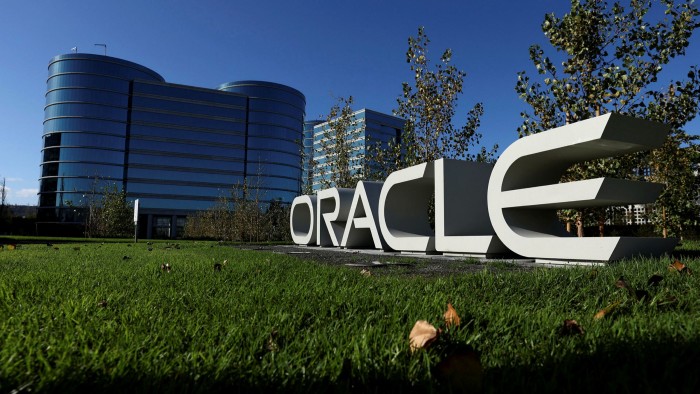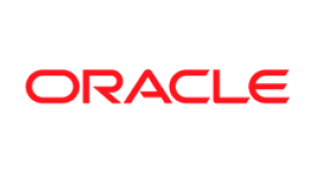Oracle Corporation (ORCL) on Q4 2021 Results - Earnings Call Transcript
Operator: Welcome to Oracle’s Fourth Quarter 2021 Earnings Conference Call. Now, I’d like to turn today’s call over to Ken Bond, Senior Vice President. Ken Bond: Thank you, Erica. Good afternoon, everyone, and welcome to Oracle’s fourth quarter and fiscal year 2021 earnings conference call. A copy of the press release and financial tables, which includes a GAAP to non-GAAP reconciliation and other supplemental financial information, can be viewed and downloaded from our Investor Relations website. Additionally, a list of many customers who purchased Oracle Cloud Services or went live on Oracle Cloud recently will be available from our Investor Relations website as well. On the call today are Chairman and Chief Technology Officer, Larry Ellison; and CEO, Safra Catz. Safra Catz: Thanks, Ken, and good afternoon, everyone. We are again reporting earnings earlier than last year. And with Fusion ERP, we are now filing our quarterly and annual financial statements faster than any other company in the S&P 500. This is possible because of the highly automated and machine learning-enabled system that helps us complete the accounting of financial transactions much more quickly. As you can see, we had a fantastic quarter with revenue nearly $200 million above my guidance. Q4 is really a story of every product, every region, and every metric exceeding expectations. The credit for the excellent full year results in the quarter goes to our global team of employees who supported our customers without interruption this past year. We were successful by continuing to deliver best-in-class products and services, both infrastructure and applications to help our customers in their digital transformation, many who’ve reinvented themselves in real time because of the pandemic. Now, the growth rates we are reporting today are entirely organic, reflecting true related growth across our product portfolio. Total cloud services and license support revenue for the quarter was $7.4 billion, up 8% in U.S. dollars, 4% in constant currency driven by Fusion, Autonomous Database, and our Gen2 OCI. Application subscription revenues were $3 billion, up 11% in U.S. dollars and 7% in constant currency. Larry Ellison: Thanks, Safra, and great job. Your team delivered a spectacular Q4. Clearly, our strategy to develop cloud applications with cloud infrastructure is now beginning to drive top line revenue growth to go along with years of consistent double-digit earnings per share growth. Our strategy is as easy to explain as it is technically challenging to implement. That’s a good thing. If it wasn’t hard to do, others would be able to do it. Our strategy and applications depends on Oracle becoming the world’s largest provider of cloud ERP systems. Then, building upon that strong ERP foundation, we’re going to expand into manufacturing, CRM and industry-specific applications. We are successfully executing this strategy. Oracle Fusion and NetSuite are now the world’s two most popular cloud ERP systems. SAP, the leader in on-premise ERP, never rewrote their ERP system for the cloud. This has caused hundreds of customers to abandon SAP and migrate to Oracle Fusion ERP. That’s already happened. But over the coming months, several more major banks and utilities and a lot of other companies will complete their Oracle Fusion implementation projects and go live on Fusion ERP. Oracle is taking massive amounts of share away from SAP ERP. It’s crucial to our future. Ken Bond: Thank you, Larry. Erica, if you could please now prepare the audience to poll for questions. Operator: Our first question comes from Mark Moerdler with Bernstein Research. Mark Moerdler: Thank you. And congratulations on to the team on a clean, nice quarter. I’d like to try to get some more color on the drivers of the success of the Oracle Cloud ERP solution. Can you give us some more sense of how much of Oracle Fusion ERP is from new Oracle ERP customers? How much is international versus the U.S.? How much is large enterprise? Where is the sweet spot? Any color you can give to get a sense of what’s really driving the growth, and how much of that is new to versus existing customers would be very helpful. Larry Ellison: Yes. This is Larry. There are more new customers than upgrades from on-premise ERP with Oracle Fusion. So, it’s probably about 60-40, in the 60s, it’s probably not quite two to one new customers, but most of the -- a majority of the business is coming from new customers. We’re also upgrading our installed base of the E-Business Suite and PeopleSoft and JD Edwards to Fusion. But again, more revenue is coming from new customers, customers, people like that. They are coming from our on-premise installed base. So, that’s really the trend. And we think that trend is actually going to accelerate in favor of new customers because the SAP migration phenomenon is relatively recent in the last 12 months -- over the last two years, but it’s really accelerating now in the last 12 months. So, we think that’s going to hold. So, another way to look at it is it’s a very -- as people migrate to Oracle Fusion ERP and smaller companies migrate to NetSuite ERP, these are both enormous businesses. Fusion ERP, I mean, it is certainly much bigger than $10 billion -- and NetSuite is bigger than $10 billion, Fusion is probably bigger than $20 billion as these businesses mature. Safra Catz: Yes, and as far as where it’s happening, I have to tell you, it is so broad-based. It is a worldwide phenomenon for us. Our Fusion, NetSuite are just chugging along. It was an incredible, incredible Q4, and Q1 looks enormous. So imagine, bookings are way up, and there’s just a lot of success. We have so many customers that have gone live. So, we have references from some of the largest companies in the world to really small or medium-sized companies that it’s pretty consistent, almost any prospect can find many companies just like it already being incredibly successful. And I think that, frankly, the pandemic taught many of our prospects and customers that moving quickly is really required these days. I think that folks used to think moving quickly is risky. I think, they really saw that they had to move to much more modern, flexible, digital businesses, and that we are the destination for them for the back-office without a doubt. Larry Ellison: I’d like to add one thing. We almost never lose a competitive ERP deal in the cloud, virtually never. Operator: And our next question is from Keith Weiss with Morgan Stanley. Keith Weiss: Excellent. Thank you, guys, for taking the questions, and congratulations on another year of 20% -- or a year of 20% plus earnings growth. And frankly, nice to see the stock starting to reflect the durability of earnings growth you guys have seen over the past couple of years. So, it’s nice to see that. I wanted to dig in a little bit on the infrastructure side of the equation, and in particular, OCI. Another quarter of, I think you said, 103% growth in OCI consumption. Can you dig in a little bit on sort of what are the workloads that are being done on OCI? Is this just all Oracle Database workloads? We know there’s a lot of those out there that just run so well on OCI, or is there a broader perspective of the big workloads that guys are bringing over, not looking for commentary on any specific customer, but just broadly what do you see in this space? Where do you guys do well? Where do you win with OCI? Larry Ellison: Okay. I mean, it’s really easy to remember. About half of it’s database, half of it’s everything else. So, I mean everything else -- I mean, the database, you understand. They’re lifting and shifting existing database workloads and developing new Oracle Database workloads on OCI. The other thing varies from things like Zoom who have moved over, but also in simulations, and we’re very, very good at running simulation software. So, almost -- so a large number of car companies have moved all of their PaaS simulations to the Oracle Cloud because we do it faster and cheaper than any other cloud. So, we have actually a pretty balanced portfolio right now where we have the Oracle database contributing to half of the workloads running on -- running in OCI and the other half is a variety of new customers doing new applications, not database related. Safra Catz: Keith, thank you. First of all, thank you for . The reality is that any customer that is really focused on performance, security like Larry mentioned, and cost, which happens to show up in many, many workloads, one of the areas we’re doing particularly well are ISVs who are obviously experts at running their workloads. They’re in the business and they are coming to us extensively because they’re really studying the benefits that we bring them. And of course, as I mentioned and as we never stop mentioning, security with what’s going on these days. You really have to be in a cloud that is basically obsessed with security while still giving you incredible performance at lower cost. I mean, once we are given a try, what happens is the workload comes, one workload comes, and it’s usually followed by many others. And so, it’s -- we’ve got a lot of momentum, let’s say. Larry Ellison: And I want to emphasize one thing, I said it, but I want to say it again, is there are new Oracle workloads being developed, especially in the area of genomics where there have been a number of new databases moved to Oracle and OCI that track things like the genetic variants of COVID-19. But, there are a number of these things, and you’ll see a whole series of announcements coming out where we’ve moved aggressively into health care, and one of the big new applications for our database is just -- is tracking the genomics of pathogens, and those databases are being developed right on Oracle Autonomous Database from scratch. Operator: Our next question comes from Derrick Wood with Cowen & Company. Derrick Wood: Great. Thanks for taking my questions. And congrats as well on a strong quarter. I’ve got one for Safra and one for Larry. Safra, in the past, you’ve talked about the potential revenue opportunity for the app space, if you were to migrate everybody to SaaS. So, I wanted to ask about the database side and in particular, Exadata. Can you give us a sense of what the revenue potential or uplift could be if you shifted all Exadata customers to Cloud@Customer? And how you feel about the strength of those motions heading into the new fiscal year? And then, for Larry, I mean, as you guys push to drive adoption of Autonomous Database, should we think of Cloud@Customer being the biggest vehicle for adoption, or what routes to market do you see working best? Safra Catz: Okay. Let me get it started, and then Larry can finish. So, Derrick, I’m glad you asked because when customers move from running their own dozen or 100 Exadatas, when it’s time for a refresh or a new set, we prefer that they go to Cloud@Customer and -- or have a dedicated region. However, just so that you know since you all focus on the numbers, you have to understand that when we sell hardware, regular way, we recognize all that revenue once it’s delivered, all that hardware is delivered. But, when we install Cloud@Customer, Exadata Cloud@Customer or dedicated region, we don’t recognize that revenue upfront. And so, -- and you don’t even see that that is all happening right now in our income statement and yet we’re still growing. So, as a general matter, first of all, it is much -- even though we believe we make around 3 times, maybe more, in revenue in the case of Cloud@Customer versus selling -- just selling the hardware can be anywhere from 3 to 5 times, the customer actually ends up spending less because we manage their entire estate. We update their databases, et cetera, depending on what services they’re using, and they get the benefit of always having capacity, always having the most up-to-date system, the most secure system and patched and fully managed by us. So, though, ultimately, they give us significantly more money 3 to 5 times as much, in fact, they end up spending much less to maintain that estate. So, for -- it’s kind of a win-win because we’re much more efficient, fully automated and save them the immense amount of labor it takes to run these very critical production systems. Okay. I guess, Larry’s question, what was it again, Derrick? Derrick Wood: It was around Autonomous Database and what’s kind of the route to market to drive adoption, is Cloud@Customer really the biggest vehicle, or are there other routes that are working well too? Larry Ellison: Well, the Autonomous Database only runs in the cloud. It does not run on-premise. It doesn’t run on -- even at the Exadata appliance. It runs on or public cloud. So right now, the public cloud is the most popular route for Autonomous Database and Cloud@Customer is becoming more popular as people scale up, so. But right now, the most popular way to use Autonomous Database is in the OCI public cloud. Operator: Our next question is from Kirk Materne with Evercore ISI. Kirk Materne: Thanks very much. And thanks for taking the question. I was wondering, Safra, could you just talk about sort of the performance in Europe this quarter? It looks like it bounced back nicely. And I guess, along those same lines, can you just talk about cloud adoption on certain just maybe what you’re seeing in the -- I assume you guys are probably leading the charge. But what you’re seeing in other regions just following maybe close behind it? Thanks. Safra Catz: Sure. So, first of all, I have two new leaders in Europe, Middle East, Africa. I have a very refreshed and new and really successful management team in Europe. And they are pretty much firing on all cylinders. It is extremely broad throughout Europe, Middle East, all of EMEA. tell you incredible strength worldwide. Latin America doing phenomenally; Japan doing phenomenally; as a result, JPAC doing very, very well; and of course, led by North America. I have to tell you, it’s been an amazing year. It was a phenomenal quarter, but truly an amazing year worldwide. And I’m more than satisfied. I am delighted by the results of the team. And for me, this was my first full year with the field. So, I really applaud the team for doing a spectacular job worldwide. Operator: Our final question comes from Raimo Lenschow with Barclays. Raimo Lenschow: Hey. Thanks for squeezing me in. Safra, the one thing that was interesting that we didn’t really talk that much about is your RPO and RPO growth. Can you talk about it again? Because like the growth there is actually even better than I see on the revenue line. And that, to me, suggests that this wasn’t just Q4. It looks like things are coming together broad-based in the coming quarters as well. Thank you. Safra Catz: Yes, Raimo, you are so right. Q4, but really, it’s just coming together all around, the RPO. I’m glad really, really strong bookings are -- were truly enormous. Obviously, they don’t show up in the income statement right away, but they -- the future is just so positive. And you might have heard me, I was hinting to that in my comments. And one of the reasons we’re so comfortable leaning into our investment because we really want to make sure we’ve got the capacity to take on the enormous amount of bookings that are flying in and that both were during the year and are going on line, and so, will be recognized over this next year and beyond. But, there is just an enormous backlog for us of customers that are going live and that will start consuming and we’re very optimistic. So, thank you so much for asking, and I’m glad you noticed that. Raimo Lenschow: Thank you. Okay. Congrats. Ken Bond: Thank you, Safra. If there are any questions coming out of this call, please feel free to call the Investor Relations hotline. Otherwise, I’ll turn the call back to Erica for closing. Operator: Thank you for joining today’s Oracle’s fourth quarter 2021 earnings conference call. We appreciate your participation. You may now disconnect.
Oracle Corporation Partners with Duality Technologies to Enhance Government and Defense Sectors with AI Solutions
- Oracle Corporation (NYSE:ORCL) has partnered with Duality Technologies to offer a privacy-first AI solution for government and defense sectors, deployable on Oracle Cloud Infrastructure (OCI).
- The collaboration enables secure data collaborations for mission-critical operations, leveraging OCI's robust security and interoperability features.
- Despite a recent decrease in stock price, BMO Capital maintains an "Outperform" grade for Oracle, raising its price target from $345 to $355.
Oracle Corporation (NYSE:ORCL) is a global leader in database software and technology, cloud-engineered systems, and enterprise software products. The company has recently partnered with Duality Technologies to offer a privacy-first AI solution for government and defense sectors. This collaboration introduces Duality's secure data collaboration platform to the Oracle Cloud Marketplace, making it deployable on Oracle Cloud Infrastructure (OCI).
The integration allows government, defense, and intelligence agencies to conduct secure data collaborations for mission-critical operations. Leveraging OCI's robust security and interoperability features, the platform supports specialized cloud environments, including Oracle Cloud Isolated Regions. This ensures that agencies can issue encrypted queries and receive confidential results swiftly, maintaining high security standards and regulatory compliance.
Duality's platform, powered by OCI's high-bandwidth and low-latency architecture, is designed for compute-intensive analytics and AI workloads. This adaptability is crucial for evolving mission needs. Dr. Alon Kaufman, CEO of Duality Technologies, emphasizes the balance between innovation and confidentiality, allowing agencies to extract valuable intelligence while maintaining stringent security and privacy standards.
Rand Waldron, vice president at Oracle, highlights the company's commitment to national security and defense organizations. The partnership with Duality provides a comprehensive ecosystem of solutions, enabling customers to securely collaborate and utilize advanced AI tools. This transforms sensitive data into strategic advantages, reinforcing Oracle's position in the market.
Oracle's stock, trading at $302.34, has seen a decrease of approximately 1.84%, with a drop of $5.68. Despite this, BMO Capital maintains an "Outperform" grade for Oracle, raising its price target from $345 to $355. Oracle's market capitalization is approximately $848.14 billion, with a trading volume of 11.18 million shares, as highlighted by BMO Capital.

Oracle Commodity Holding Corp. Announces Upsized Private Placement Financing
- Oracle Commodity Holding Corp. has increased its non-brokered private placement from 7.5 million units to 8 million units due to high demand, raising potential gross proceeds to $280,000.
- Company insiders will subscribe for up to 1.75 million units, contributing up to $61,250.
- The proceeds will be used for general corporate purposes and to acquire a 2% royalty from U.S. Fluorspar LLC, aiming to strengthen the company's position in the mining royalty sector.
Oracle Commodity Holding Corp. is a mining royalty company with interests in precious metal and critical mineral projects. Recently, the company announced an increase in its non-brokered private placement financing due to high demand. The offering has been upsized from 7.5 million units to 8 million units, raising potential gross proceeds to $280,000. Each unit includes one common share and one transferable common share purchase warrant, allowing the holder to acquire an additional share at $0.06 for three years.
Company insiders are set to subscribe for up to 1.75 million units, contributing up to $61,250. This transaction is considered a related party transaction under Multilateral Instrument 61-101, but the company is exempt from formal valuation and minority shareholder approval requirements. The offering is expected to close soon, pending necessary regulatory approvals, including from the TSX Venture Exchange.
The proceeds from this financing will be used for general corporate purposes and to pay for the acquisition of a 2% royalty from U.S. Fluorspar LLC over certain fluorspar projects. CEO Jason Powell is leading the company through this expansion, aiming to strengthen Oracle Commodity Holding Corp.'s position in the mining royalty sector.
Oracle Corporation, trading under the symbol NYSE:ORCL, is a separate entity from Oracle Commodity Holding Corp. Evercore ISI recently maintained its "Outperform" grade for Oracle, with the stock priced at $296.96. Evercore ISI also raised Oracle's price target from $340 to $350, indicating confidence in the company's future performance.
Oracle has demonstrated an asset turnover ratio of approximately 0.33 over the trailing twelve months, showing its efficiency in using assets to generate revenue. The operating profit margin stands at about 30.44%, reflecting Oracle's ability to convert sales into operating profit effectively. In the most recent quarter, Oracle reported a revenue of $14.93 billion, with a gross profit of $10.04 billion after accounting for the cost of revenue.

Oracle Commodity Holding Corp. Expands Financing Amid High Demand
Oracle Commodity Holding Corp., a mining royalty company specializing in precious metals and critical minerals, has announced an increase in its non-brokered private placement financing due to high demand. The offering, initially set at 7 million units priced at $0.035 per unit, has been upsized to 7.5 million units, raising potential gross proceeds from $245,000 to $262,500. Each unit includes one common share and one transferable common share purchase warrant, allowing the holder to acquire an additional share at an exercise price of $0.06 for three years from issuance.
Company insiders are expected to subscribe for up to 1.75 million units, contributing up to $61,250 in gross proceeds. This transaction is considered a related party transaction under Multilateral Instrument 61-101. However, the company is exempt from formal valuation and minority shareholder approval requirements, as insiders' participation will not exceed 25% of the company's market capitalization. The offering is subject to regulatory approvals, including from the TSX Venture Exchange, and the units will be issued privately under exemptions from prospectus requirements. The proceeds from this offering will be used for general corporate purposes and to pay for the acquisition of a 2% royalty from U.S. Fluorspar LLC over certain fluorspar projects. This strategic financial move is led by CEO Anthony Garson, who is steering the company through this growth phase.
The company's focus on expanding its royalty interests aligns with its long-term strategy to enhance shareholder value. In contrast, Oracle Corporation (NYSE:ORCL) is a major player in the technology sector, with a price-to-earnings (P/E) ratio of approximately 64.39. The company's price-to-sales ratio is about 13.47, and its enterprise value to sales ratio is around 15.08.
Oracle's enterprise value to operating cash flow ratio is approximately 41.34, with an earnings yield of about 1.55%. The company has a debt-to-equity ratio of roughly 4.36, indicating a significant level of debt compared to its equity. Additionally, Oracle's current ratio is approximately 0.62, suggesting that its current assets are not sufficient to cover its current liabilities.
On September 26, 2025, UBS set a price target of $364 for Oracle, as highlighted by UBS. At the time of this announcement, Oracle's stock price was $291.41, indicating a potential increase of approximately 24.91% from the current price. This reflects the market's positive outlook on Oracle's future performance, despite its high debt levels and low current ratio.

Oracle Corporation's (NYSE:ORCL) New Price Target and AI Sector Wins Drive Optimism
- Oracle Corporation (NYSE:ORCL) receives a new price target from Guggenheim, suggesting an 11.18% increase.
- The company's significant contract wins in the AI sector have led to a 37% surge in shares.
- Oracle's strategic partnerships and a 77% increase in cloud infrastructure sales forecast highlight its strong market positioning.
Oracle Corporation (NYSE:ORCL) is a leading player in the technology sector, known for its database software and cloud infrastructure services. Recently, John DiFucci from Guggenheim set a new price target for Oracle at $375, up from its current price of $337.28. This target suggests an 11.18% increase, reflecting optimism about Oracle's future performance.
Oracle's shares have surged by over 37% following significant contract wins in the AI sector. The company secured billion-dollar deals, underscoring its growing influence in the AI market. This development has boosted investor confidence, as highlighted by the stock's 30% surge in premarket trading after announcing an improved sales outlook for its cloud infrastructure.
The company's strategic positioning is further strengthened by partnerships with tech giants like Amazon, Alphabet, and Microsoft. Oracle anticipates a 77% increase in cloud infrastructure sales, reaching $18 billion this fiscal year. This surpasses its previous forecast of 70% growth, driven by the increasing demand for AI solutions.
Richard Clode from Janus Henderson Investors describes Oracle's performance as a "drop the mic" moment. The company has secured $300 billion in contracts, reflecting unprecedented demand for AI. This growth is supported by sovereign drivers enhancing capital expenditures, expanding Oracle's market presence.
Oracle's stock, currently priced at $337.06, has seen a significant rise of 39.56% over the past year. The stock has fluctuated between $239.94 and $339.69 today, with a market capitalization of approximately $946.74 billion. The trading volume stands at 42.4 million shares, indicating strong investor interest.

Oracle Corporation's (NYSE:ORCL) Growth in the Cloud Computing Sector
- Guggenheim maintains a "Buy" rating for Oracle, raising its price target from $250 to $375, indicating strong confidence in Oracle's growth, especially in cloud services.
- Oracle's stock has seen a significant increase, with a price jump of $3.03 or 1.27%, showcasing its strong performance in the tech market compared to competitors like Apple.
- The company's market capitalization stands at approximately $678.36 billion, reflecting its substantial presence and volatility in the tech industry.
Oracle Corporation (NYSE:ORCL) is a leading technology company known for its software products and services, particularly in database management. The company has been making significant strides in the cloud computing sector, which is a key growth area. Oracle competes with other tech giants like Microsoft and Amazon in the cloud space.
On September 10, 2025, Guggenheim maintained its "Buy" rating for Oracle, with the stock priced at $241.51. Guggenheim also raised Oracle's price target from $250 to $375, as highlighted by TheFly. This reflects confidence in Oracle's growth potential, particularly in its cloud services, which have been a major driver of its stock performance.
Oracle's stock is experiencing significant growth, driven by its impressive cloud outlook that has captivated investors. The stock price has increased by $3.03 or 1.27% from the previous trading session, reaching a high of $243.44 today. This growth contrasts with Apple's stagnating stock performance, highlighting the factors determining winners in the tech market.
Oracle's market capitalization is approximately $678.36 billion, indicating its substantial presence in the tech industry. The stock has traded between a low of $234.56 and a high of $243.44 today, with a trading volume of 22.84 million shares on the NYSE. Over the past year, ORCL has reached a high of $260.87 and a low of $118.86, showcasing its volatility and growth potential.
The financial landscape is also influenced by broader market dynamics, such as the temporary block on former President Trump from dismissing Federal Reserve's Cook and the emerging turf war concerning Fannie Mae and Freddie Mac. These events, while not directly related to Oracle, shape the overall market environment in which the company operates.

Oracle Corporation's Upcoming Earnings Report: A Financial Overview
- Oracle Corporation (NYSE:ORCL) is anticipated to release its quarterly earnings with an estimated EPS of $1.47 and projected revenue of $15.03 billion.
- The company's performance in the cloud services sector is a significant contributor to its financial outcomes.
- Financial metrics such as the P/E ratio of 50.37, debt-to-equity ratio of 5.09, and current ratio of 0.75 offer insights into Oracle's market valuation and financial health.
Oracle Corporation, listed on the NYSE under the symbol ORCL, is a leading provider of integrated cloud applications and secure infrastructure. The company is set to release its quarterly earnings on September 9, 2025, with analysts estimating an earnings per share (EPS) of $1.47 and projected revenue of $15.03 billion. Oracle's performance in the cloud services sector is a key driver of its financial results.
Oracle plans to announce its first-quarter fiscal year 2026 earnings results on September 9, 2025, after the market closes. The company will host a conference call and live webcast at 4:00 p.m. Central Time to discuss the financial results. This event will be accessible on the Oracle Investor Relations website, providing insights into the company's performance and future outlook.
Analysts expect Oracle to report a year-over-year increase in earnings, driven by higher revenues for the quarter ending August 2025. The consensus estimate suggests Oracle will post quarterly earnings of $1.47 per share. The stock's movement will largely depend on whether the actual results meet or exceed these expectations. A positive earnings surprise could lead to a rise in Oracle's stock price, while a miss might result in a decline.
Oracle's financial metrics provide insight into its market valuation. The company has a price-to-earnings (P/E) ratio of approximately 50.37, indicating how much investors are willing to pay for each dollar of earnings. Its price-to-sales ratio is about 10.93, reflecting the market's valuation of its revenue. The enterprise value to sales ratio is around 12.56, showing the company's total valuation in relation to its sales.
Oracle's debt-to-equity ratio is notably high at approximately 5.09, indicating a significant level of debt compared to equity. This could be a concern for investors, as it suggests a reliance on debt financing. Additionally, Oracle's current ratio is around 0.75, suggesting potential liquidity challenges in covering short-term liabilities with its current assets. These financial metrics will be important considerations for investors as they assess Oracle's financial health and future prospects.

BMO Lifts Oracle Price Target to $245, Keeps Outperform Rating Unchanged
BMO Capital raised its price target on Oracle (NYSE:ORCL) to $245 from $235 while maintaining an Outperform rating, as the firm expects the company’s significant capital expenditure requirements to impact free cash flow and potentially necessitate new capital raises in fiscal 2026 or 2027.
The analyst noted that Oracle’s ongoing dividend commitments and anticipated share buybacks, combined with rising capex needs—likely tied to cloud infrastructure and AI investments—could pressure cash flows. While BMO sees any capital raise as manageable, it cautioned that dilution from new financing could weigh modestly on EPS.
Despite this, the firm made only slight adjustments to its estimates and reiterated its bullish stance, arguing that Oracle’s growth prospects in cloud and AI continue to support a favorable risk/reward profile. The raised target reflects confidence in Oracle’s strategy and the durability of its business model even as it navigates near-term financial balancing.







